GardenersHelper
In Memoriam
- Messages
- 6,344
- Name
- Nick
- Edit My Images
- Yes
There are 1300 pixel high versions of the images in this post in this album at Flickr.
A few days ago I was photographing flowers hand-held in the garden using natural light with my G80 and low power Canon 500D close-up lens. This was one of the images I captured.
#1 Rose
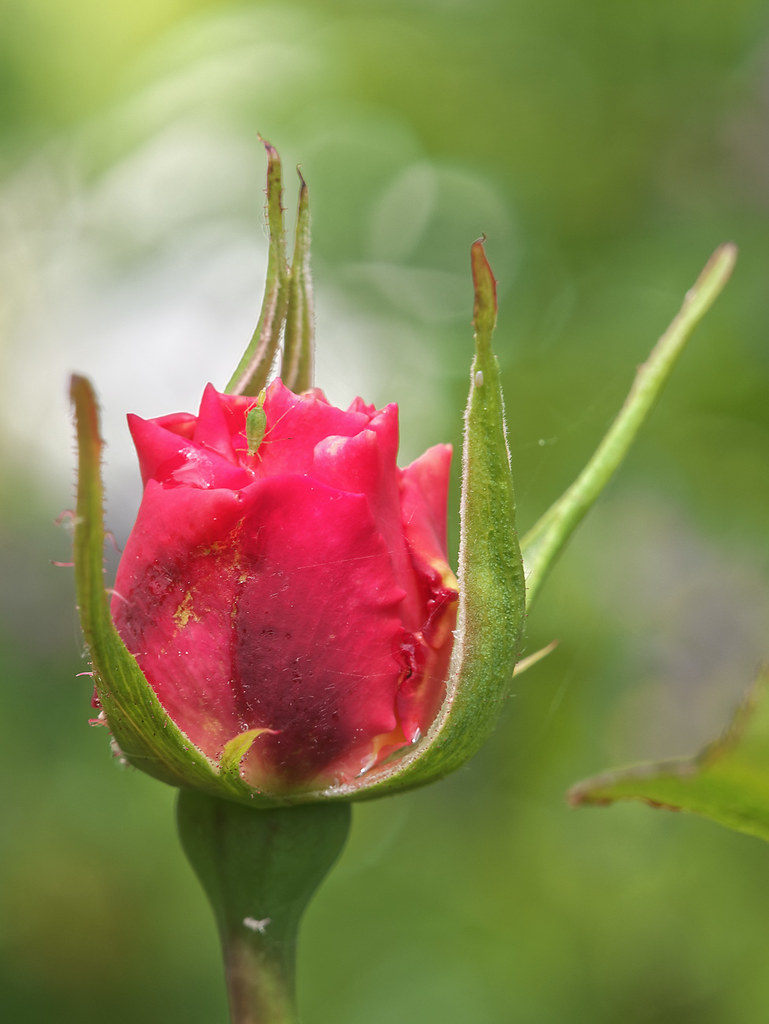
1171 1 Garden May 2017 1169 02c DXO+SP7+LR6 2017_05_14 P1370207_DxO 0100RAW01cP SP7 LR6 1300h by gardenersassistant, on Flickr
I didn't take any notice of the aphid when I captured the image, but when I was doing the processing I did a very nearly 100% crop of a very similar image (which had the aphid a bit sharper) to have a closer look at the aphid.
#2 Size of crop
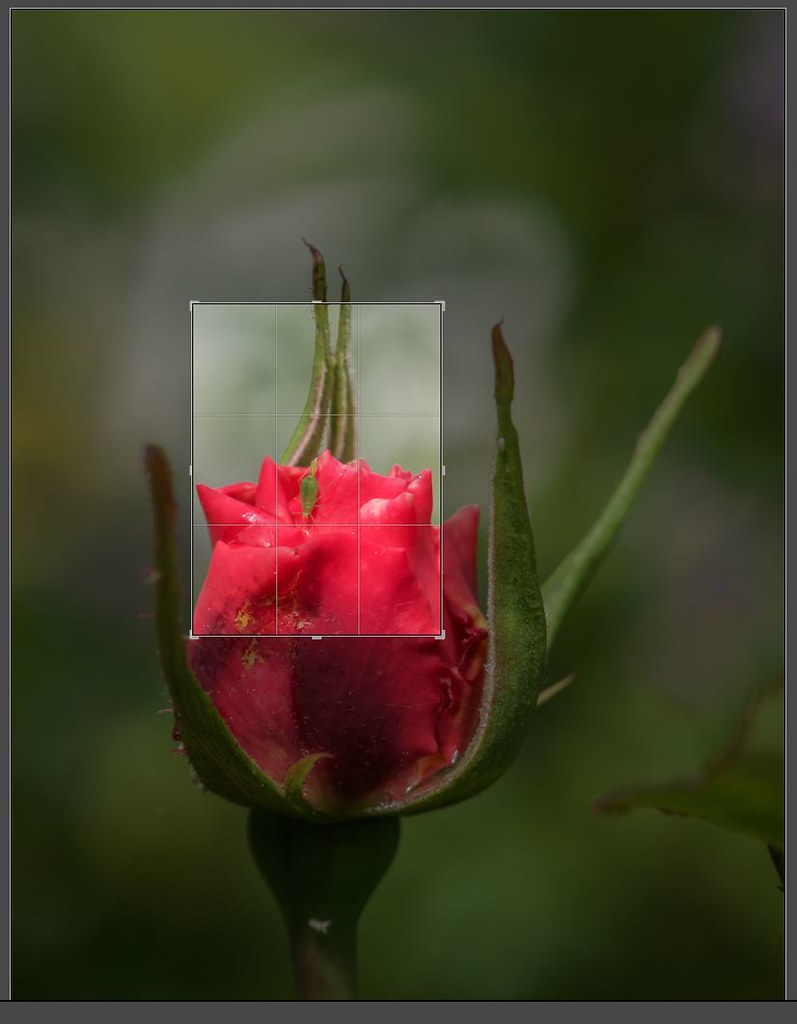
1171 2 May 2017 crop by gardenersassistant, on Flickr
This revealed something that I had seen before a couple of times - an aphid giving birth. (Wikipedia: adults of the intermediate summer generations consist of females only, some winged and others wingless, which produce tiny nymphs rather than eggs. Males occur only in the late fall generation, which produces the overwintering eggs.) Here we see a nymph being born.
#3
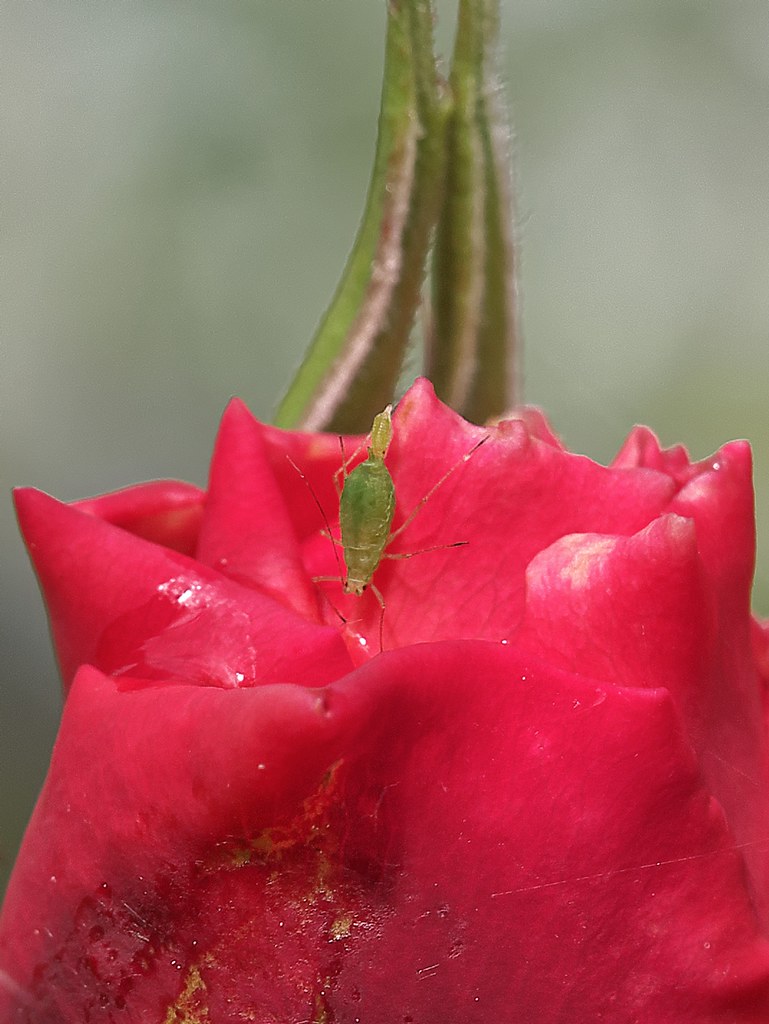
1171 3 Garden May 2017 1169 03c DXO+SP7+LR6 2017_05_14 P1370217_DxO 0100RAW01cP SP7 LR6 1300h Df by gardenersassistant, on Flickr
From wikipedia. Aphids can reproduce asexually by parthenogenesis (development of an embryo from an unfertilized egg cell.) Some aphids have telescoping generations, that is, the parthenogenetic, viviparous female has a daughter within her, who is already parthenogenetically producing her own daughter.
(If you think that is weird, how about this - Wikipedia on telescoping generations: This pattern of reproduction can also occur in certain mites that are not parthenogenetic, e.g. Adactylidium, in which the young hatch and mate within the mother, eating her from the inside and then escaping; in some species the males never escape, and in others they die shortly afterwards. However, the resulting inbreeding has consequences much like those of parthenogenesis, and the females are not actually pregnant on hatching but become pregnant before emerging into free living.)
Here is one I captured (as JPEG) in 2010 in our garden with my Canon SX10 bridge camera and probably a Raynox 250 close-up lens. This time I was using flash.
#4
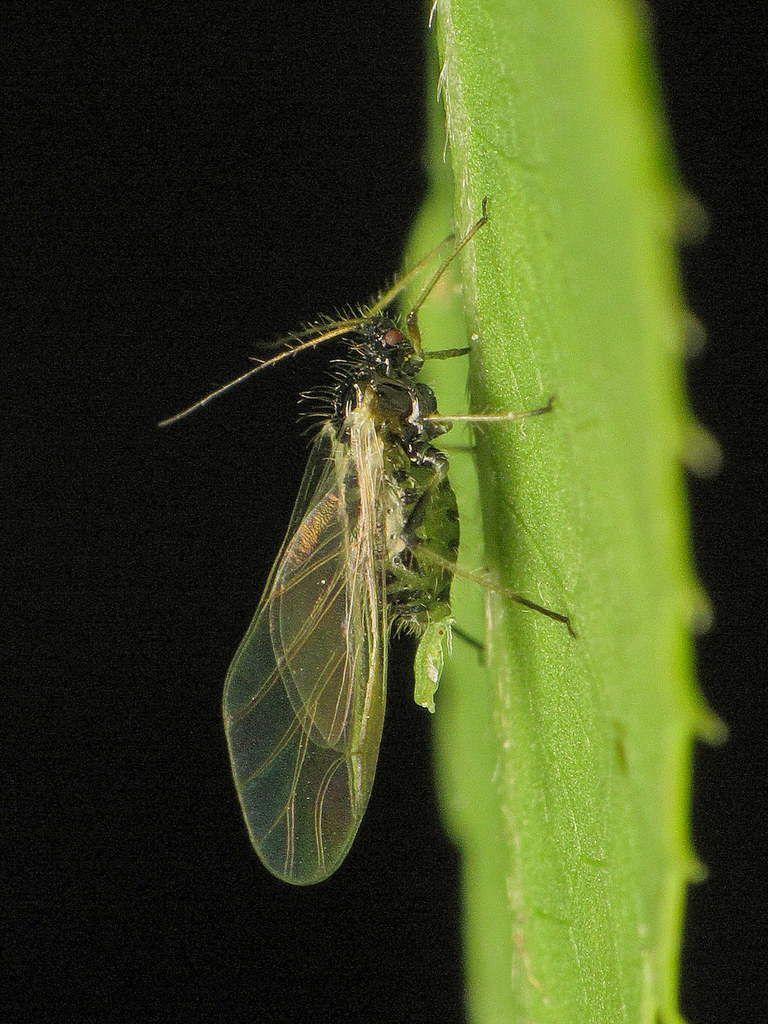
1171 4 Garden June 2010 0317 IMG_0505_DxO JPG 01c SP7 LR6 1300h by gardenersassistant, on Flickr
The next year I saw this again, this time at a local nature reserve. Here too it was JPEG with SX10, and probably Raynox 250. These used natural light. Given the shutter speeds of 1/40 sec and 1/30 sec I would have been using a tripod to reduce hand-shake, but I would almost certainly have been working "hands-on" rather than using a remote release.
You can see the eyes of lots more nymphs inside the female.
#5
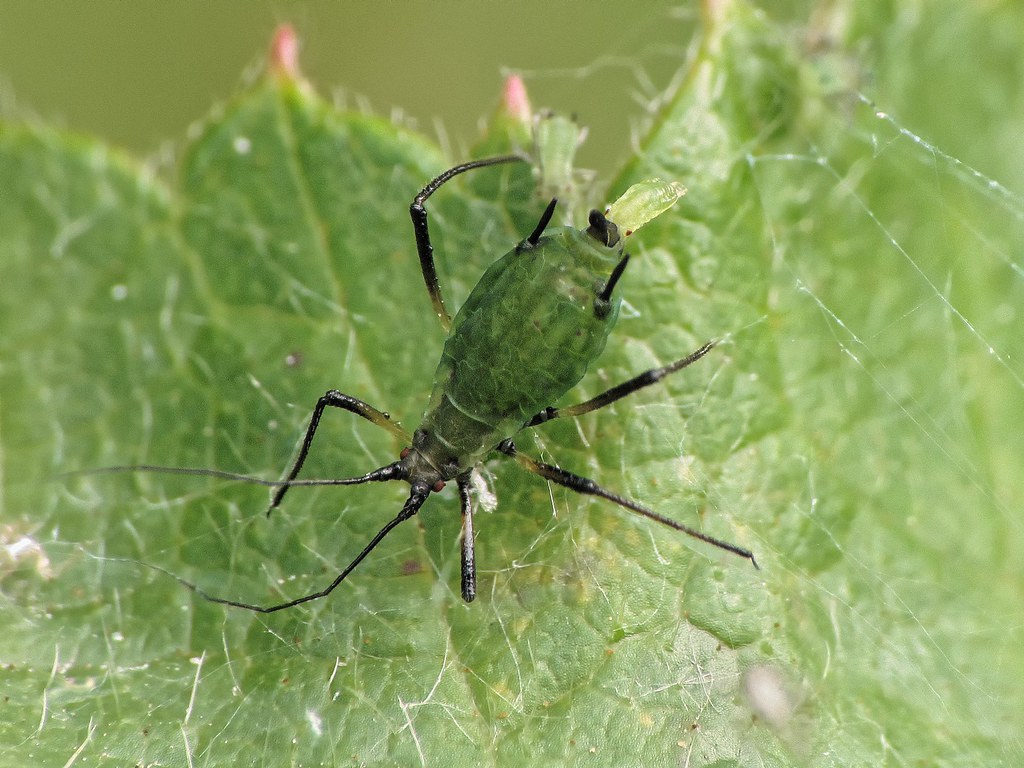
1171 5 Portbury Wharf May 2011 0359 IMG_8162_DxO JPG 01c SP7 LR6 1300h by gardenersassistant, on Flickr
Here we can see three of the nymphs that have emerged.
#6
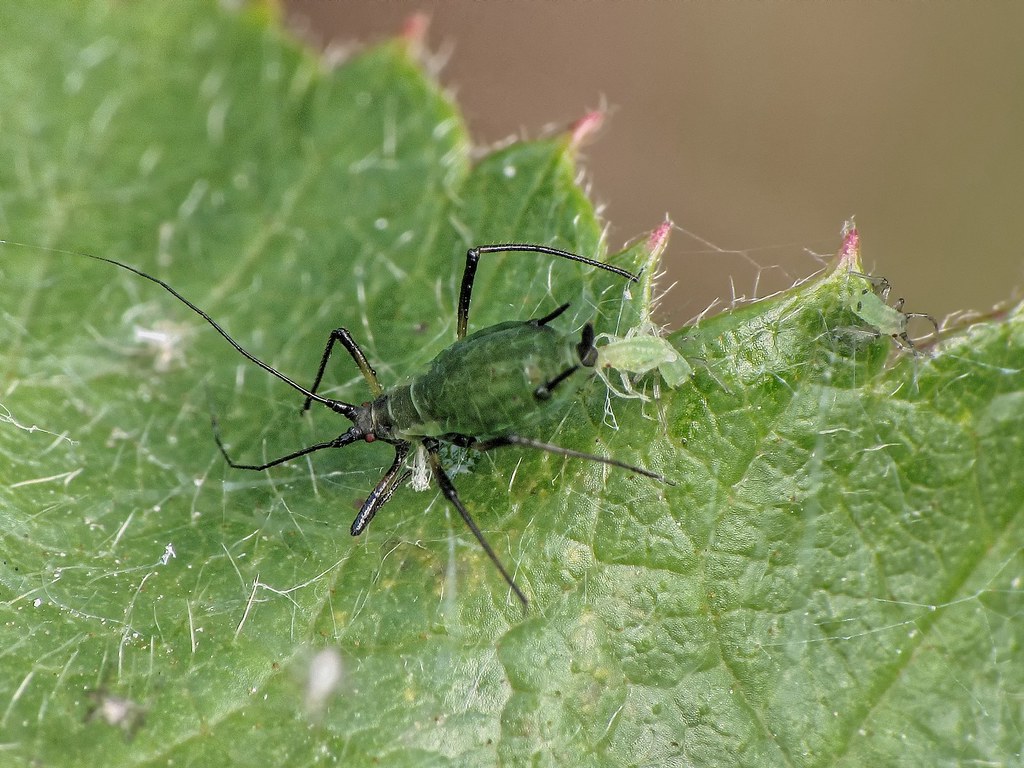
1171 6 Portbury Wharf May 2011 0359 IMG_8219_DxO JPG 01c SP7 LR6 1300h Df by gardenersassistant, on Flickr
A few days ago I was photographing flowers hand-held in the garden using natural light with my G80 and low power Canon 500D close-up lens. This was one of the images I captured.
#1 Rose

1171 1 Garden May 2017 1169 02c DXO+SP7+LR6 2017_05_14 P1370207_DxO 0100RAW01cP SP7 LR6 1300h by gardenersassistant, on Flickr
I didn't take any notice of the aphid when I captured the image, but when I was doing the processing I did a very nearly 100% crop of a very similar image (which had the aphid a bit sharper) to have a closer look at the aphid.
#2 Size of crop

1171 2 May 2017 crop by gardenersassistant, on Flickr
This revealed something that I had seen before a couple of times - an aphid giving birth. (Wikipedia: adults of the intermediate summer generations consist of females only, some winged and others wingless, which produce tiny nymphs rather than eggs. Males occur only in the late fall generation, which produces the overwintering eggs.) Here we see a nymph being born.
#3

1171 3 Garden May 2017 1169 03c DXO+SP7+LR6 2017_05_14 P1370217_DxO 0100RAW01cP SP7 LR6 1300h Df by gardenersassistant, on Flickr
From wikipedia. Aphids can reproduce asexually by parthenogenesis (development of an embryo from an unfertilized egg cell.) Some aphids have telescoping generations, that is, the parthenogenetic, viviparous female has a daughter within her, who is already parthenogenetically producing her own daughter.
(If you think that is weird, how about this - Wikipedia on telescoping generations: This pattern of reproduction can also occur in certain mites that are not parthenogenetic, e.g. Adactylidium, in which the young hatch and mate within the mother, eating her from the inside and then escaping; in some species the males never escape, and in others they die shortly afterwards. However, the resulting inbreeding has consequences much like those of parthenogenesis, and the females are not actually pregnant on hatching but become pregnant before emerging into free living.)
Here is one I captured (as JPEG) in 2010 in our garden with my Canon SX10 bridge camera and probably a Raynox 250 close-up lens. This time I was using flash.
#4

1171 4 Garden June 2010 0317 IMG_0505_DxO JPG 01c SP7 LR6 1300h by gardenersassistant, on Flickr
The next year I saw this again, this time at a local nature reserve. Here too it was JPEG with SX10, and probably Raynox 250. These used natural light. Given the shutter speeds of 1/40 sec and 1/30 sec I would have been using a tripod to reduce hand-shake, but I would almost certainly have been working "hands-on" rather than using a remote release.
You can see the eyes of lots more nymphs inside the female.
#5

1171 5 Portbury Wharf May 2011 0359 IMG_8162_DxO JPG 01c SP7 LR6 1300h by gardenersassistant, on Flickr
Here we can see three of the nymphs that have emerged.
#6

1171 6 Portbury Wharf May 2011 0359 IMG_8219_DxO JPG 01c SP7 LR6 1300h Df by gardenersassistant, on Flickr
Last edited:

